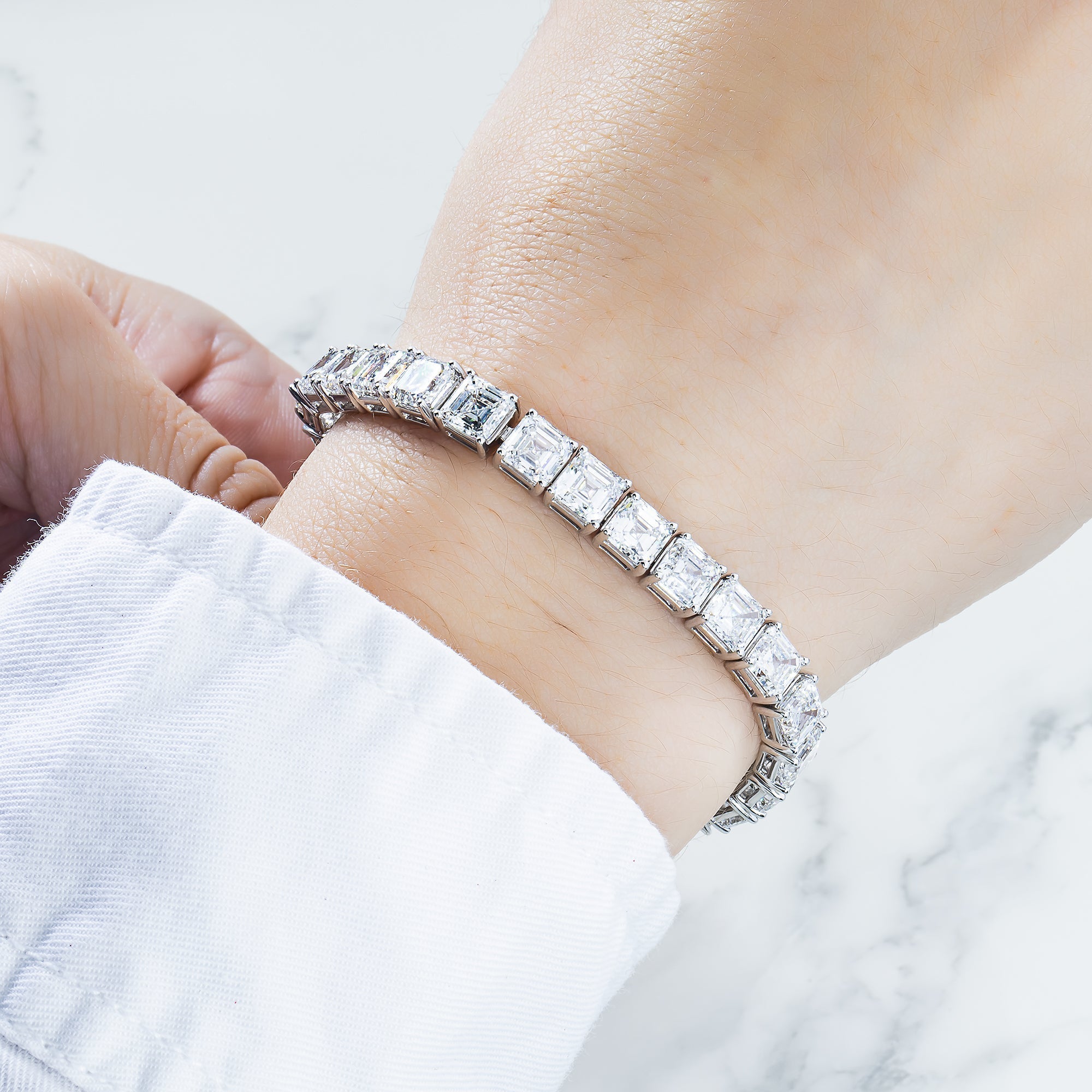The Hidden Story Behind Every 30 Ct Diamond Ring
Diamonds have always held a place of mystery and fascination in human history, admired for their brilliance, resilience, and rarity. Yet among all diamond sizes, few command the imagination quite like the 30 ct diamond ring. A stone of this magnitude represents the peak of natural beauty and craftsmanship, shaped by the Earth over billions of years and refined by human hands into a symbol of perfection.
Exploring the hidden story behind such a diamond reveals the science, history, and cultural meaning that make it one of the rarest treasures in the world.
Understanding the Scale of a 30 Ct Diamond
To appreciate what makes a 30 ct diamond ring exceptional, one must first understand what “carat” represents. A carat equals 0.2 grams, so a 30-carat diamond weighs about six grams—remarkable for a single gemstone. Beyond its weight, however, lies a complex interplay of clarity, color, and cut that determines its final brilliance and value.
Diamonds of this scale are geological miracles. Deep within the Earth’s mantle, under immense heat and pressure, carbon atoms crystallize over billions of years to form diamonds. Only a small fraction of these crystals ever grow large enough to become gem-quality stones suitable for cutting into a 30-carat masterpiece. This extreme rarity is part of what gives the stone its almost mythical status.
The Journey from Mine to Masterpiece
Before a 30 carat diamond shines in a finished ring, it travels a long path from raw crystal to polished gem. Rough diamonds are first unearthed in specialized mining regions such as South Africa, Botswana, and Russia—areas known for producing large stones. Each rough diamond is studied in detail using computer modeling to determine how best to cut it for maximum brilliance and minimal waste.
Because such large stones are so valuable, the cutting process is meticulous and time-consuming. It can take months for expert gem cutters to plan and shape a 30 ct stone. Every angle and facet must be calculated precisely to ensure optimal light performance. Even the smallest mistake could reduce its brilliance or value dramatically.
The Four Cs: Evaluating a 30 Ct Diamond

Carat Weight
The carat weight determines the diamond’s physical size, but it does not alone dictate beauty or worth. In larger diamonds, proportion and symmetry play an essential role. A perfectly proportioned 30 carat stone can appear more luminous and elegant than a poorly cut one of the same size.
Cut
The cut is arguably the most critical factor for brilliance. Expert gem cutters design facets that maximize light reflection. Common shapes for large stones include round brilliant, emerald, and cushion cuts. A round brilliant emphasizes sparkle, while an emerald cut reveals the clarity and depth of the gem’s crystal structure.
Color
Diamonds are graded on a color scale from D (colorless) to Z (light yellow or brown). For a 30 carat diamond, even faint hues can become noticeable due to its size. Therefore, near-colorless grades such as D, E, or F are preferred for these monumental stones.
Clarity
Large diamonds reveal inclusions more easily than smaller ones. A 30 ct diamond with minimal imperfections—graded as Flawless (FL) or Very Very Slightly Included (VVS)—is exceedingly rare. The clarity grade contributes significantly to the gem’s desirability and market value.
Designing a 30 Ct Diamond Ring
Crafting a setting for such a stone is both an art and an engineering challenge. The jeweler must design a ring strong enough to support the gem’s weight while allowing it to capture and reflect light beautifully. Platinum is often the metal of choice because of its strength and neutral tone, which complements the diamond’s natural color.
Solitaire settings are popular for 30 carat diamonds, as they allow the stone to take center stage. However, designers sometimes incorporate smaller accent stones or halo settings to add proportion and contrast. The final design balances grandeur with wearability, ensuring that the piece remains elegant rather than ostentatious.
Historical Context and Cultural Meaning
Large diamonds have captivated humanity for centuries. Famous examples like the Cullinan, the Koh-i-Noor, and the Regent have inspired legends and defined dynasties. A 30 ct diamond ring continues that tradition, representing not just wealth but also endurance, craftsmanship, and natural wonder.
In many cultures, diamonds symbolize purity and everlasting love. Owning or gifting a stone of this size transforms that symbolism into something monumental. It becomes a testament to both human aspiration and the rare forces of nature that brought it into existence.
The Science of Brilliance
A diamond’s sparkle comes from its ability to bend and reflect light. This phenomenon, known as refraction, depends heavily on the gem’s cut proportions. The larger the stone, the more complex the challenge of achieving perfect light performance. For a 30 ct diamond, even a tiny miscalculation in the angle of a facet can diminish its fire and scintillation.
Modern technology assists cutters through advanced imaging and laser mapping. These tools ensure symmetry and precision while preserving as much of the original carat weight as possible. The result is a breathtaking gem that captures light in endless reflections.
Ethical and Sustainable Sourcing
As consumer awareness grows, ethical sourcing has become an essential aspect of diamond purchasing. Buyers increasingly seek transparency regarding where their gems originate and how they are mined. Responsible jewelers comply with international frameworks such as the Kimberley Process to prevent the sale of conflict diamonds.
Additionally, many diamond producers invest in sustainability programs that support local communities and reduce environmental impact. For more detailed information on global diamond ethics, the Responsible Jewellery Council provides resources outlining fair practices, environmental standards, and traceability initiatives.
Natural vs. Lab-Grown Diamonds
While natural 30 carat diamonds remain exceptionally rare, advances in technology have made it possible to create lab-grown diamonds of similar size and composition. These man-made gems share the same chemical and optical properties as natural diamonds but are produced under controlled laboratory conditions.
Lab-grown diamonds appeal to environmentally conscious buyers and those seeking affordability. However, they lack the geological history that gives natural diamonds their mystique and enduring value. For collectors and connoisseurs, the origin of a diamond often carries emotional and historical weight that synthetic alternatives cannot replicate.
Investment and Legacy
Beyond their aesthetic appeal, large diamonds are often viewed as investment assets. The rarity of stones above 20 carats ensures their long-term value retention. A 30 ct diamond ring can serve as a tangible store of wealth that appreciates over time, particularly if it possesses exceptional color and clarity grades.
Ownership of such a gem often extends beyond a single lifetime. Families treat them as heirlooms, passing them down through generations as symbols of heritage and stability. Their timelessness ensures that the emotional and material value remains constant even as trends evolve.
Care and Maintenance
Maintaining the brilliance of a 30 ct diamond ring requires careful attention. Oils, dust, and residue can accumulate on the surface, reducing its sparkle. Cleaning the diamond regularly with mild soap and warm water helps maintain its clarity. Using a soft, lint-free cloth ensures that the facets remain pristine.
Because of its size and weight, the ring should be inspected by a professional jeweler twice a year. The prongs and setting must remain secure to protect the stone from accidental loosening. When not worn, it should be stored separately in a soft pouch or a lined jewelry box to prevent scratches.
Emotional Significance of Large Diamonds
Beyond technical specifications, the emotional connection to a diamond remains central to its meaning. A 30 ct diamond ring embodies confidence, endurance, and individuality. It reflects both the forces of nature that created it and the personal milestones it commemorates.
Psychologically, wearing such a piece conveys a sense of permanence and achievement. Whether used to celebrate an engagement, an anniversary, or a personal success, the diamond becomes an enduring symbol of one’s journey and resilience.
Frequently Asked Questions
How rare is a 30 ct diamond?
Extremely rare. Fewer than one in a million rough diamonds mined are large enough to produce a polished stone of 30 carats or more.
How much can a 30 carat diamond cost?
Prices vary by cut, color, and clarity but can range from several million to over twenty million dollars for top-grade stones.
Are lab-grown 30 ct diamonds available?
Yes, large lab-grown diamonds exist, though they are still uncommon. They offer a sustainable and often more affordable option than mined diamonds.
What metal is best for a 30 ct diamond ring?
Platinum is ideal due to its durability and strength. It securely holds heavy stones while complementing their brilliance with a neutral tone.
How do you clean and protect such a large diamond?
Use mild soap and warm water, avoid harsh chemicals, and have the setting checked regularly. Store separately to prevent scratches or impacts.



